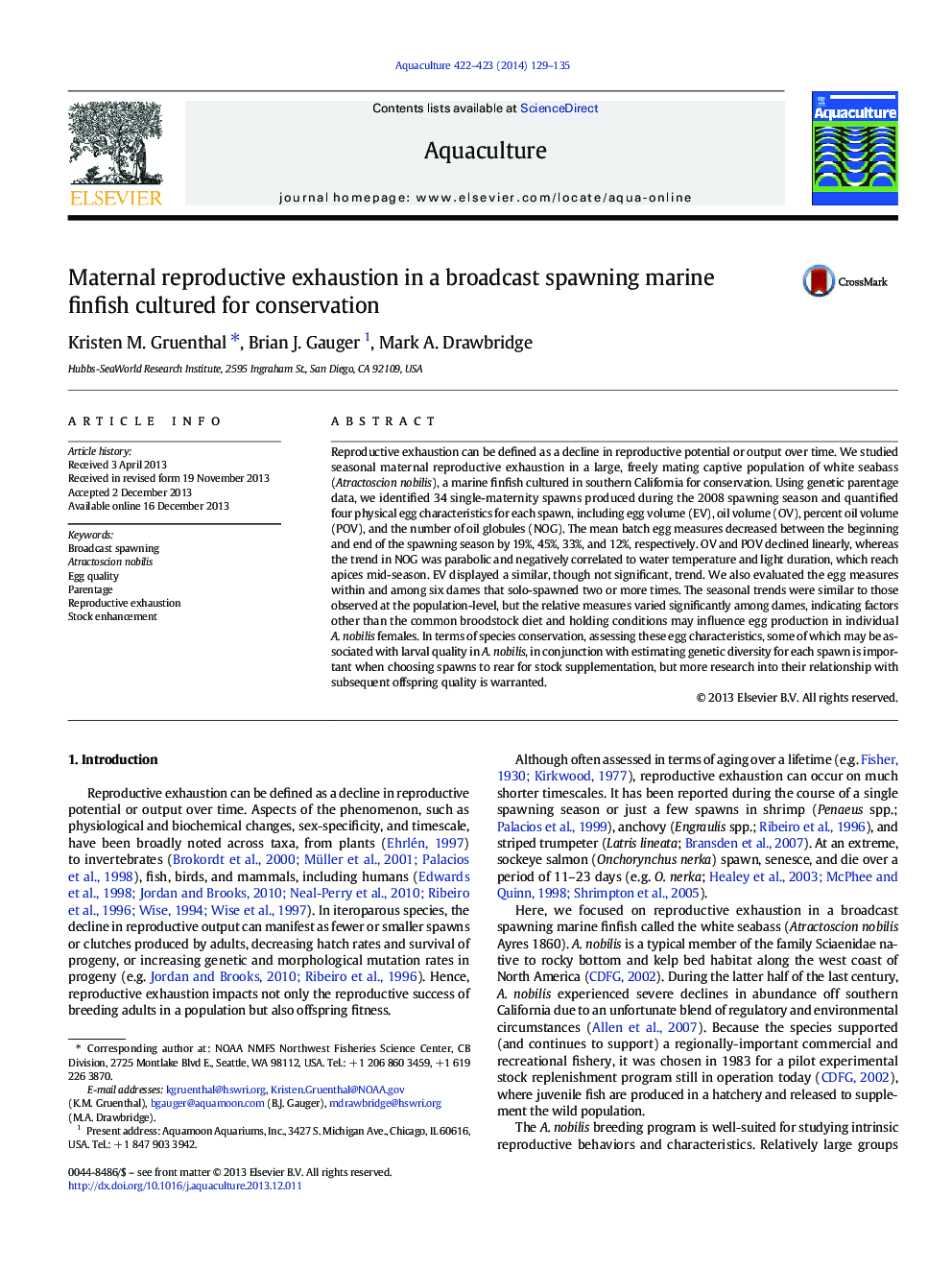| کد مقاله | کد نشریه | سال انتشار | مقاله انگلیسی | نسخه تمام متن |
|---|---|---|---|---|
| 2421957 | 1552861 | 2014 | 7 صفحه PDF | دانلود رایگان |
• We studied seasonal maternal reproductive exhaustion in white seabass.
• We determined genetic parentage and quantified egg quality metrics for 34 spawns.
• Egg, oil, and percent oil volume decreased across spawns.
• Egg measures also varied significantly within and among dames.
• Combining egg measures with genetic diversity is important for stock replenishment.
Reproductive exhaustion can be defined as a decline in reproductive potential or output over time. We studied seasonal maternal reproductive exhaustion in a large, freely mating captive population of white seabass (Atractoscion nobilis), a marine finfish cultured in southern California for conservation. Using genetic parentage data, we identified 34 single-maternity spawns produced during the 2008 spawning season and quantified four physical egg characteristics for each spawn, including egg volume (EV), oil volume (OV), percent oil volume (POV), and the number of oil globules (NOG). The mean batch egg measures decreased between the beginning and end of the spawning season by 19%, 45%, 33%, and 12%, respectively. OV and POV declined linearly, whereas the trend in NOG was parabolic and negatively correlated to water temperature and light duration, which reach apices mid-season. EV displayed a similar, though not significant, trend. We also evaluated the egg measures within and among six dames that solo-spawned two or more times. The seasonal trends were similar to those observed at the population-level, but the relative measures varied significantly among dames, indicating factors other than the common broodstock diet and holding conditions may influence egg production in individual A. nobilis females. In terms of species conservation, assessing these egg characteristics, some of which may be associated with larval quality in A. nobilis, in conjunction with estimating genetic diversity for each spawn is important when choosing spawns to rear for stock supplementation, but more research into their relationship with subsequent offspring quality is warranted.
Journal: Aquaculture - Volumes 422–423, 20 February 2014, Pages 129–135
